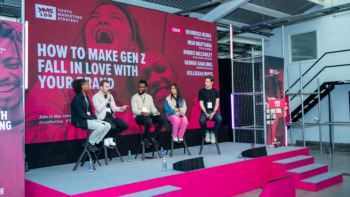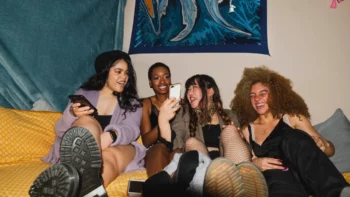If you’re marketing to Gen Z, then you’re marketing to digital natives: today’s students have grown up with the internet, so they’re no strangers to targeted ads, branded content and influencer marketing on social media. However, if you want your targeted ads to land successfully in this fickle demographic, it’s important to understand how they behave online.
Gathering inspo
For Gen Z, social media goes way beyond being just a place to interact with people they know, within their immediate network. Put it this way: US Gen Zs would turn to Twitter to check for news updates over Google, the New York Times, or CNN. So you can bet that social media ranks highly in their list of places to get shopping inspiration.

Influencer marketing has transformed Gen Z’s experience of pop culture: the public figures that they look up to for entertainment are also advertisers in their own rights. It’s not surprising, then, that 65% of students turn to social media to get ideas of things they want to buy. Instagram is the most popular choice, with 69% of students using it for shopping inspiration. But TikTok is on the rise – 36% of students have turned to the shortform video platform for shopping inspo. These highly visual app-based platforms lend themselves well to targeted ads, as well as influencer marketing and sponsored content.
Over on desktop, Youtube has given the world shopping-focused haul videos and review content, which is particularly appealing for a quality-focused Gen Z. Despite being around for longer, it has long-lasting appeal for the younger demographics: 84% of US students use it once a month, and just over half (55%) use it specifically for shopping inspiration.
Targeted ads vs posts by brands
For brands looking to be strategic with their targeted ads, these visual platforms are ideal if you want to factor into that initial inspiration-gathering scroll. Once they’ve landed on their platform of choice, students are most likely to click on social media ads, closely followed by posts by friends, then posts by brands. Targeted ads are very much normalized among Gen Z – and they’ll happily engage with your promoted content if it’s relevant to them.

Keep it creative
In a time where 45% of students are buying things online that they used to buy in-store, it’s crucial to recreate that in-person shopping experience and give young shoppers the best sense of what you’re offering in your ads. Gen Z are actually more likely to shop in-store than their older Millenial counterparts – which means that all of this shopping from home is a bit of a shock to the system for them. The most creative social media ads will appeal to them in the long run – look at the long-term success of Glossier’s initial Instagram targeted ad campaign – because these ads recreate the process of engaging with a product in real time.
We’re talking about that top-of-the-funnel, inspiration period of Gen Z shopping – but it’s worth mentioning that an increasing number of student shoppers actually head straight to your brand’s social media profile when they’re ready to buy, too. Instagram’s new shop function allows for a seamless in-app purchasing experience, and with 21% of students heading to social media as their first – and last – shopping stop, it’s likely that other social platforms will soon follow suit. As you move forward with social media ads, think about how you can make that user journey as simple and self-contained as possible.
The insights above are taken from our latest Student Shopping Report, which is coming soon. We’re very excited to share it with you. Sign up to our newsletter to be the first to hear when it drops.














